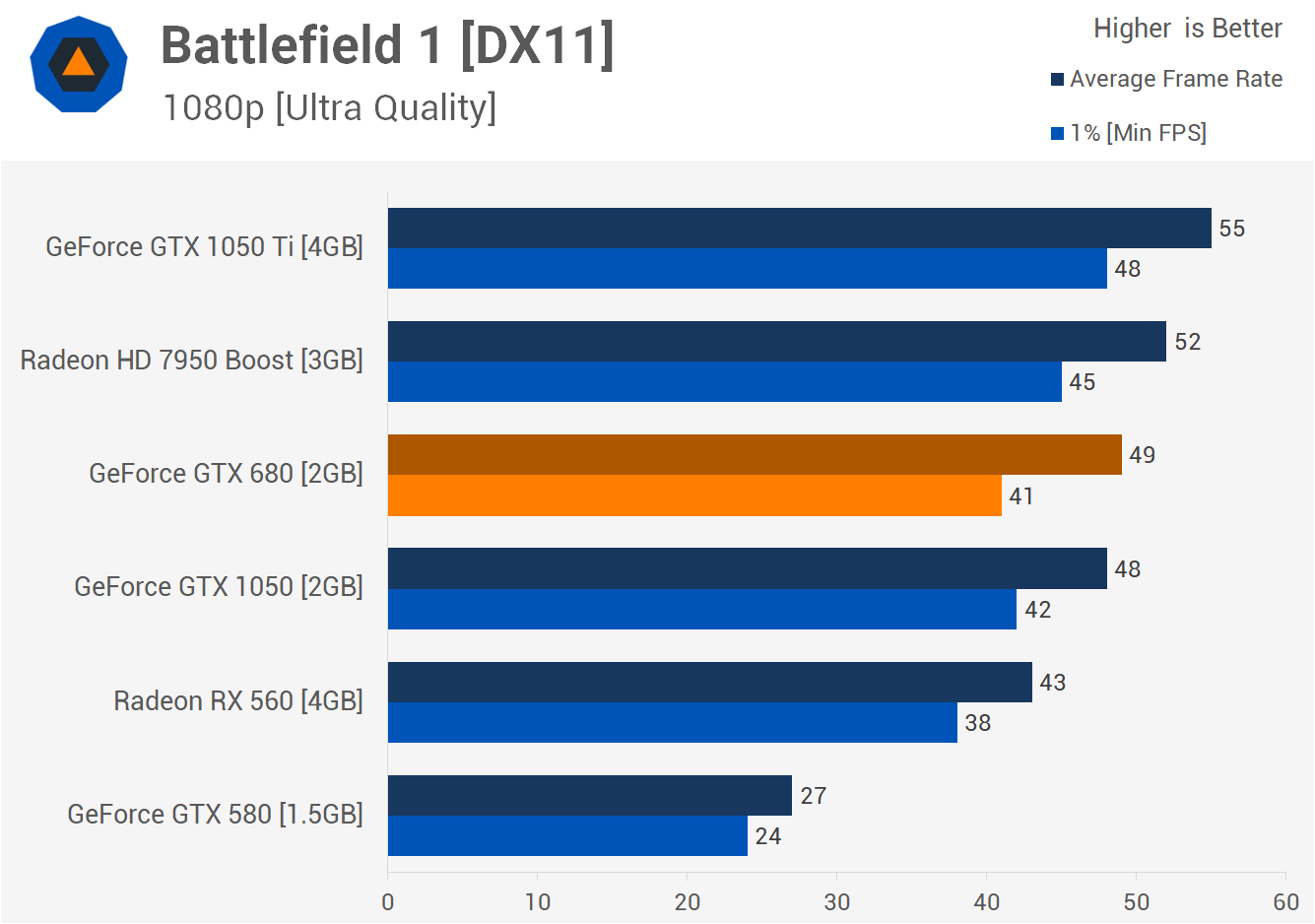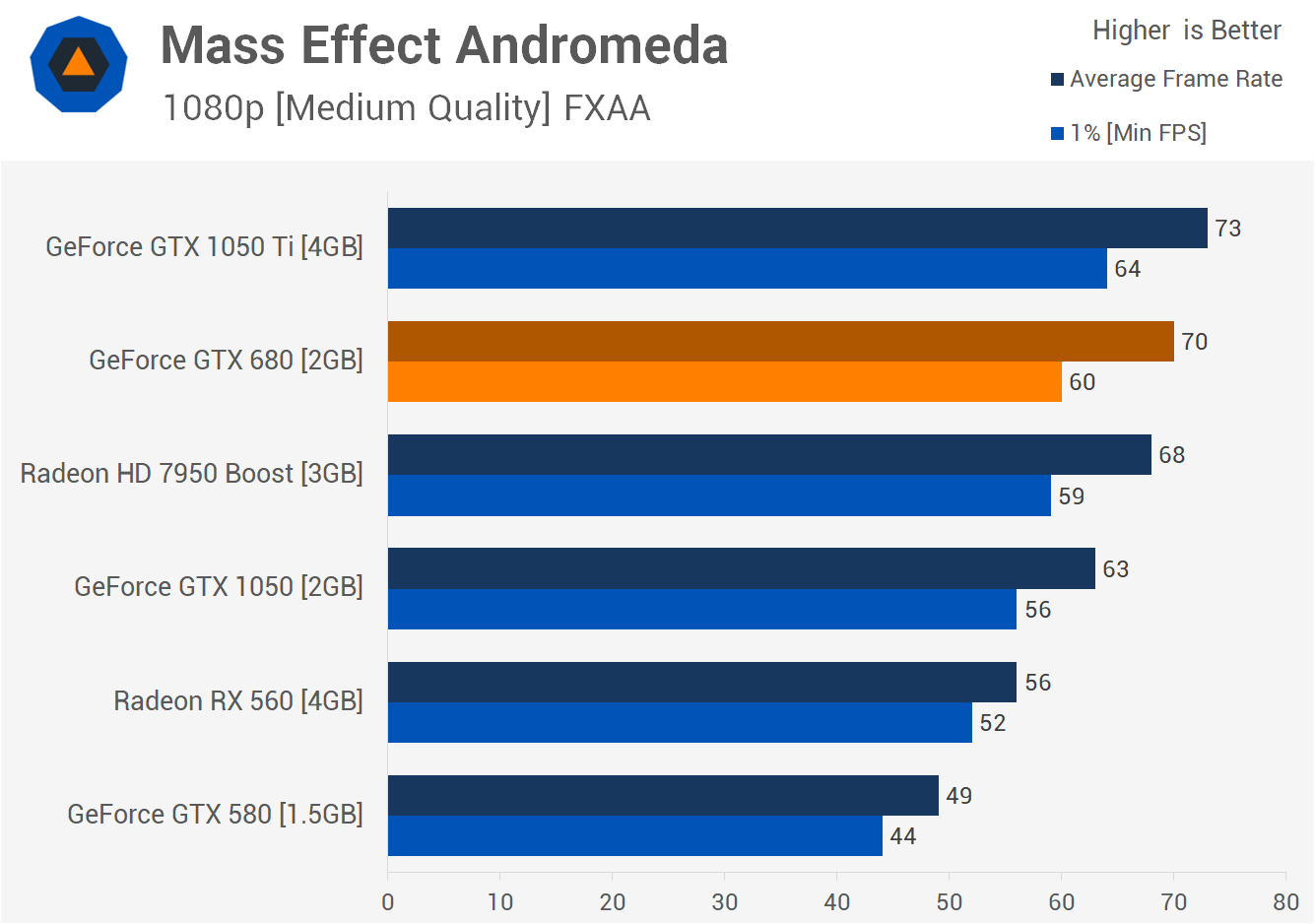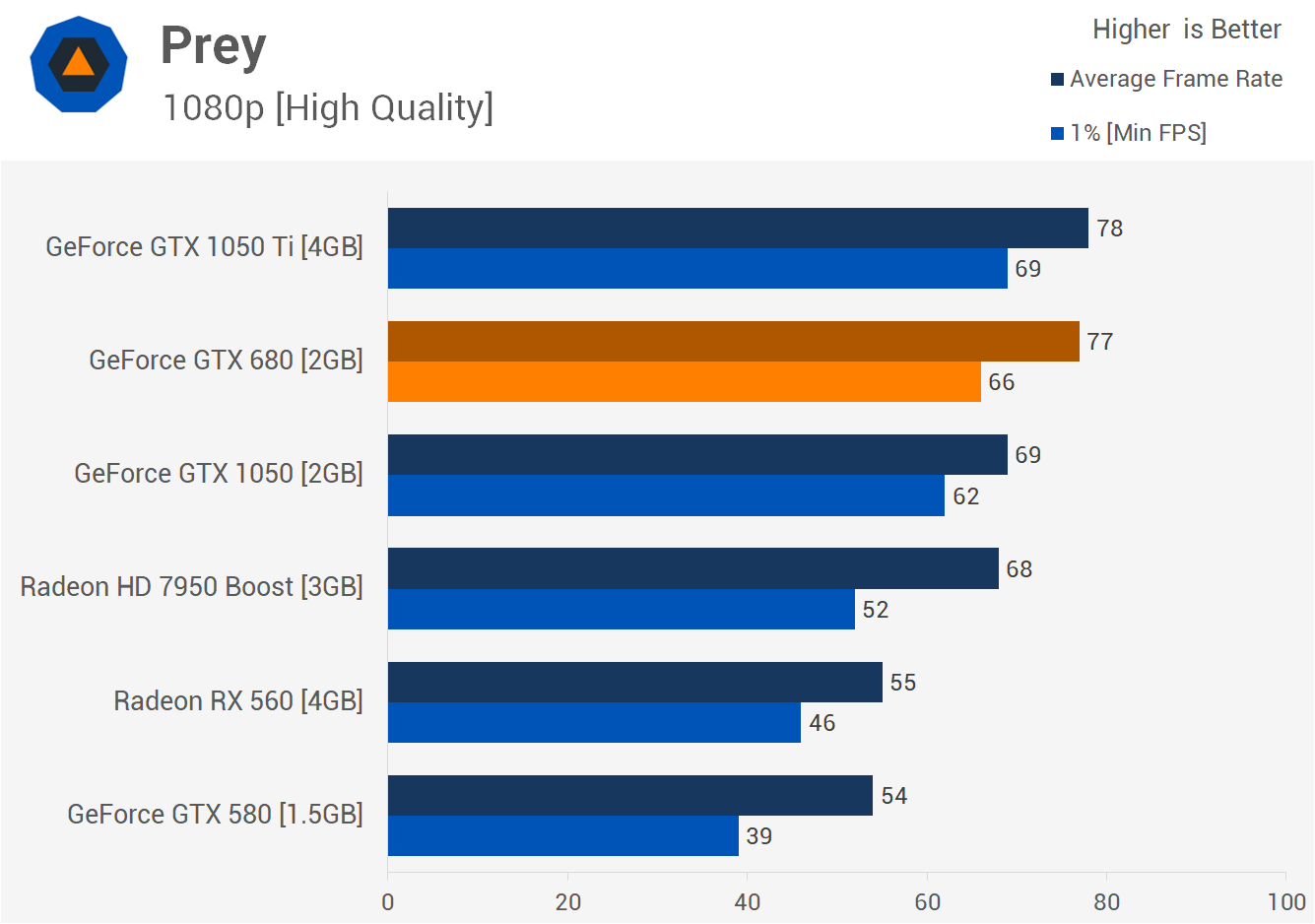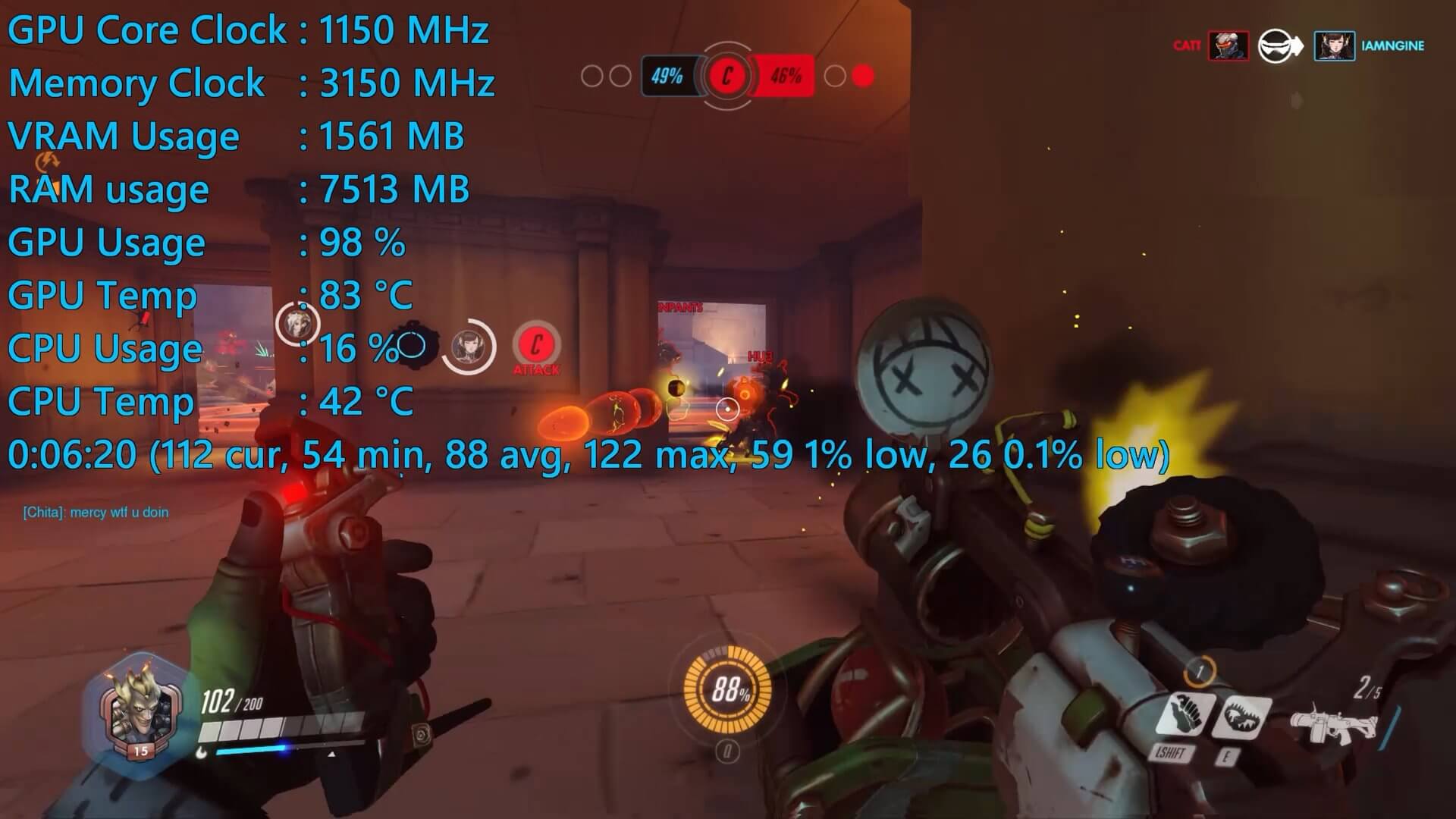Revisiting the GeForce GTX 680: GTX 1050 Ti-Class Performance for Less? - blaisdellprifid
After recently retesting the GeForce GTX 580 eight years after its release, we thought it would be engrossing to check second in on the GTX 680, another old friend that was released about six years ago as Nvidia's current and greatest art card and a successor to the aforesaid 580.
Earlier we get to the tests and game benchmarks, let's quickly recap the specs and a wee history nearly the computer architecture this card is based along. For those of you not interested in the actuate down memory lane, at least you can enjoy images of the artwork scorecard in question as you roll by...

Supported the Kepler architecture, the 680's GPU was codenamed GK104 and marked Nvidia's conversion to the 28nm outgrowth, a move that allowed for 3.5 billion transistors to be crammed into a tiny 294mm2 give out. Nvidia likewise managed to twitc in what was at the time a massive 1536 CUDA cores, three multiplication that of the GTX 580. Not only when that only the cores were clocked 30% higher and yet overall the GPU consumed less power.
The focus was on efficiency with Kepler and Nvidia basically broke its previous Fermi architecture down to the core and so rebuilt information technology to amend power consumption and die sizing. The result was the world's fastest graphics plug-in for gaming, at least when it was first released.

AMD actually amaze Nvidia to the perforate three months earlier with the HD 7970 -- how times throw changed in this regard. Although the GTX 680 was 4% cheaper at launch and offered 7% more performance in my tests, it did meet from poor availability for quite an few months later release, indeed nothing unusual there.
Back then, AMD did a good chore of keeping Nvidia along its toes. The Radeon HD 4000 series spurred a warfare that saw the GTX 200 series receive numerous price cuts. The HD 5000 series had rumbling run of the market for half a yr before GTX 400 cards arrived, and as I said, in 2012 AMD was almost three months ahead with the HD 7970.
Being slightly behind, it was important for Nvidia to step up guns blazing and to an extent that's what the companion did. The GTX 680 was without question the fastest single-GPU graphics poster money could buy. Non only was it faster than the HD 7970, but it was besides more efficacious, quieter and cheaper when it first launched. It would embody absorbing to see how they compare today.

I'm also keen to see how the GTX 680 lashings up against now's GPUs in modern games. Representing Nvidia's vintage GPU is Gainward's Phantom model, sporting the more standard 2GB VRAM fender. All benchmarking has been conducted connected our GPU test trucking rig, which is comprised of a Core i7-8700K clocked at 5GHz and 32GB of DDR4-3200 memory.
Let's see how the GTX 680 stacks up nowadays…
Benchmarks

When using the radical caliber preset at 1080p the GTX 680 is really slower than the Radeon HD 7950, though it was a humongous 81% quicker than the GTX 580. No doubt the slenderly big memory buffer is helping to improve things present.

In Dawn of War III the GTX 680 managed to roughly match the HD 7950, and this meant as a result information technology was once again much quicker than the GTX 580. The 1% low resolution was also respectable and clearly 2GB is the minimum frame buffer size up you throne get away with in this claim when using the average timber settings, sol no real surprises there.

The GTX 680 does extremely easily in Dirt 4, taking the top spot on our graph with an impressive 116fps on the average when victimization the medium prime preset, or 12% faster than the HD 7950 and 81% faster than the GTX 580.

Moving along, For Honor shows beefed-up performance from the GTX 680 as it again takes the crown berth being 25% faster than the HD 7950 and 60% faster than the GTX 580.

Functioning in Ghost Recon Wildlands was decent As the GTX 680 about matched the GTX 1050 and was 20% faster than the HD 7950 while beingness more than twice as fast Eastern Samoa the GTX 580. Although we're only victimisation the depleted quality settings, the game is still very heavy connected VRAM usage, almost maxing impossible the 2GB buffer in our try.

Using the moderate lineament settings in Mass Effect Andromeda, performance was rather solid as the GTX 680 allowed for an average of 70fps, though it was slower than the GTX 1050 Ti and sole slightly faster than the HD 7950.

Moving on to Prey using the superiority preset you rattling need a 4GB soma buffer in this title and with the GTX 680 almost all of the textures were missing, leaving us with blurry surfaces. Still, overall the performance was good and the game ran swimmingly despite the missing textures.

Last we have Resident Fiendish 7's results, in which the GTX 680 landed fair tooshie the GTX 1050 Ti and HD 7950. Victimisation the cooked timbre preset it managed to average 98fps and was thus 44% faster than the GTX 580. Total, the GTX 680 seemed to deliver a similar receive to it of the GTX 1050 Ti, but let's take a nearer look at that.

Okay so here is a crush of the eighter games we just looked at and on average we lavatory see that the GTX 680 basically matched the GTX 1050 Ti. I'm a bit dumbstricken by this because last clock I compared them the 1050 Titanium came impossible happening top. That said, I sole curbed out five games at the time and it was a close call then with the GTX 680 but being faster in Battlefield 1.
Before we wrap things skyward, let's consider some gameplay footage.
Gameplay Footage

First skyward I played a few rounds of Rainbow Six Beleaguering and found on the average that the GTX 680 was good for concluded 100fps when victimization the spiritualist quality settings at 1080p. The frame time functioning was also excellent, enabling smooth gameplay that allowed even a initiate like me to get a few decent shots in. Overall, it was a great experience and you could still own a lot of fun in this title with a GTX 680.

The experience in Battlefield 1 with the medium quality preset was bad solid. At multiplication the game was smooth and playable over 50fps on average, though at else multiplication there was noticeable material body lag as human body rates lordotic into the 40s. The experience was nonetheless quite playable and pleasurable granted the conditions.

I found confusable results when playing Front II, just the GTX 680 could manage high quality settings here, which looked great and withal offered fantabulous frame rates with an average of just over 60fps.

Fortnite plays well on pretty practically anything and when running play the game using its high quality preset the GTX 680 averaged simply shy of 70fps after 10 minutes of gameplay and remained well above 50fps at every last multiplication -- the frametime data was also very solid.

Like Fortnite, you can play Overwatch on just about anything and here we take in that when playing on immoderate prize the GTX 680 allowed for an average of almost 90fps while frame rates stayed above 50fps the least bit times.

The last game we're looking is PlayerUnknown's Battlegrounds and IT actually ran jolly well. I power saw an fair of 66fps with a tokenish of 59fps using the medium quality settings, which is a satiny and playable experience overall.

We have some power consumption figures to wrap improving our testing. Here the GTX 680 reduced total system phthisis by almost 20% compared to the GTX 580, given how much faster it was this is a significant step out forward in terms of performance per watt. That said, IT inactive pushed system consumption 26% high than that of the Radeon HD 7950 and a trifle over 60% high compared to the GTX 1050 Atomic number 2, so not great away today's standards that's for sure.
Matching today's GTX 1050 Ti
That pretty much covers everything about the performance of this well-aged graphics card, with the exception of overclocking, but those results will vary from card to card. There's also the fact that our factory overclocked test pose wasn't behaving when overclocked and I didn't have a heap of clock to mess approximately with it at the instant. As mentioned earliest, I have a 4GB model in the mail so I'll check that out when IT arrives and see if it's willing to play ball.
In price of extra functioning, you can probably expect anywhere from 5 to 15% more frames contingent how healed the card overclocks. For those of you not interested in overclocking, the good news is that a typical factory overclocked pose like the Gainward translation I old should match a factory overclocked GTX 1050 Ti in most titles.

Atomic number 3 you saw (if you didn't skip the benchmarks), the GTX 680 was just a single frame slower on average and two frames for the 1% low termination. Information technology was too 8% quicker than the HD 7950 and 13% faster than the flavoring GTX 1050, and it blitzed the senior GTX 580 aside a mammoth 65% margin. The GTX 580's 1536MB draw up buffer is scarcely too small-scale for many of today's titles and we're even seeing issues with 2GB instantly.
Seeing 1050 Ti-like execution from the GTX 680 is certainly acceptable and should handle modern games at 1080p exploitation respectable timbre settings. For those poor souls who have forgotten how much the GTX 1050 Ti should cost, I went and looked it up: $139 is the MSRP, which doesn't sound right but it is. However, you'd be doing quite well if you were to get one for $220 today.

Can you save extraordinary money and get the GTX 680 second-hand instead? Yes, if you're lucky. At eBay, we see that so far this month the cheapest GTX 680 sale ended at just over $100 and the average selling price of the 16 cards sold so far is $160.
You'd probably want to coiffe better than $160 as that's only a 27% savings on a second-hand graphics board. I'd draw a bead on for around $120 as a limit on purchasing a ill-used GTX 680 and if you can get a 4GB model, well manifestly practice so. You're chances of snagging a GTX 680 today for inferior than $100 is basically zero though, so set vivid expectations.
Shopping shortcuts:
- GeForce GTX 680 on Amazon, eBay
- GeForce GTX 1050 Ti on Amazon, Newegg
Besides simply being old (and used if you conk that route), remember that the GTX 680 also chugs a fate of power. The GTX 1050 Ti by equivalence runs much cooler, quieter and it won't ravage your power append like an FX-9590 hard to keep up with one of AMD's new APUs. The littler VRAM buffer might as wel be an issue at times unless you manage to get your hands on a 4GB GTX 680, which also isn't going to be easy.
Source: https://www.techspot.com/article/1588-geforce-gtx-680-revisit/
Posted by: blaisdellprifid.blogspot.com


0 Response to "Revisiting the GeForce GTX 680: GTX 1050 Ti-Class Performance for Less? - blaisdellprifid"
Post a Comment